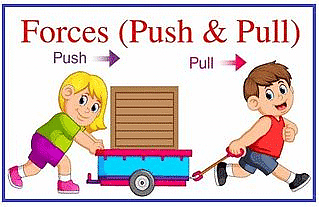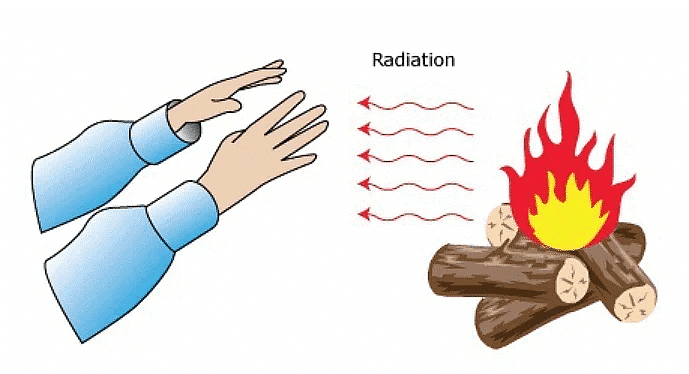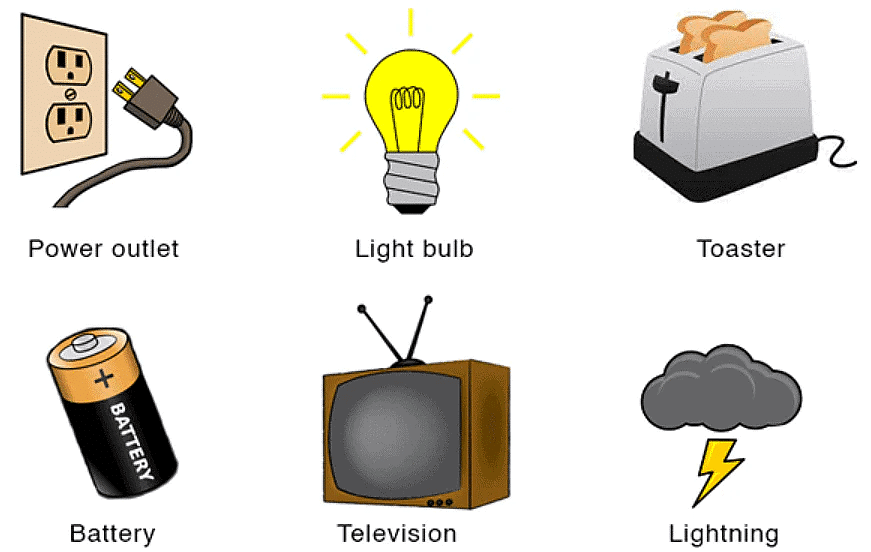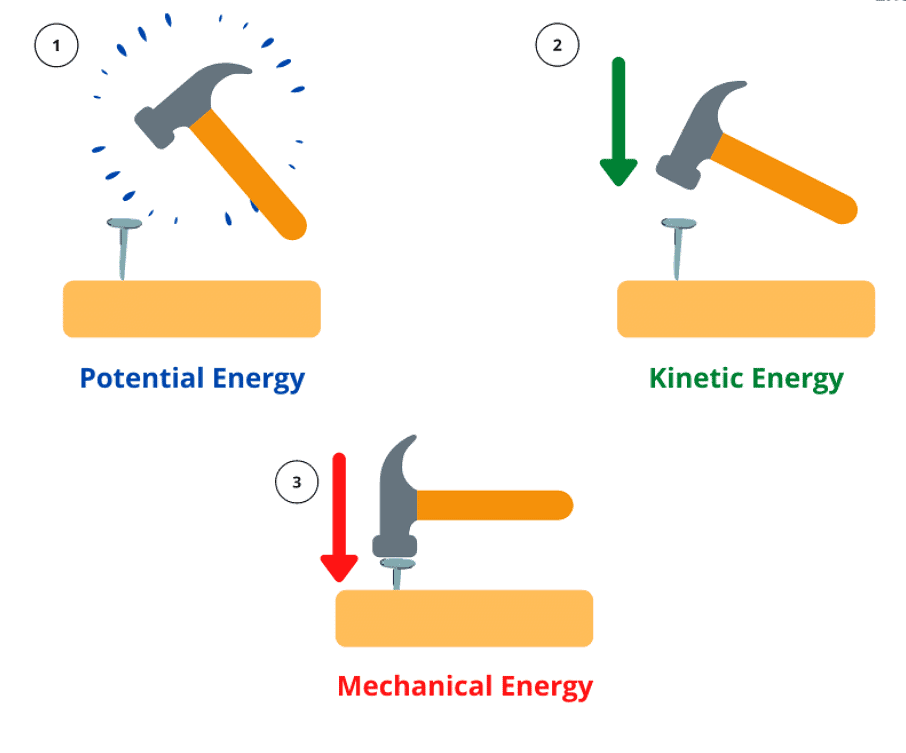Force and Simple Machines (Part 1) Class 5 Notes Science
Force
To do any work, we need to apply force. A force can make things move. When a force moves something, work is done. A push or pull applied to an object is called force.
Example: A boy pulling a toy car, a boy pushing the paddles of a bicycle and a lady drawing water from a well.

Effects of Force
- A force can move a stationary object.
- A force can also make a moving object move faster when applied in the direction in which the object is moving.
- A force can change the direction of a moving object.
- A force can stop a moving object.
- A force can slow down a moving object when applied in the opposite direction to which the object is moving.
- A force can change the shape of an object.
Types of Forces
 Types of Force
Types of Force
- Gravitational force or Gravity: The force that attracts objects to the center of the Earth is called gravitational force or gravity. Gravity is a force that makes things fall to the ground.

- Magnetic force or magnetism: The force by which a magnet pushes or pulls iron objects or another magnet is called magnetic force.

- Muscular force: When we push or pull something, we are applying muscular force.
 Muscular Force applied on the Table
Muscular Force applied on the Table
- Electrostatic force: Some materials when rubbed with other materials get charged. These charged materials either attract or repel other objects. This happens because of the electrostatic force.

- Friction or frictional force: The force that acts between two objects when they are in contact with each other is called friction. Friction stops or slows down the movement of objects across a surface.

Energy
To do any work, we need energy. Energy is the ability to do work. There are many forms of energy.
Types of Energy
 Types of Energy
Types of Energy
- Light energy: Light energy helps us to see things. Sun, electric bulb, tube light and candle are some sources of light.

- Heat energy: Heat is a form of energy. Apart from sun, we get heat energy by burning of fuels like coal, kerosene, LPG (Liquefied Petroleum Gas) and wood.

- Sound energy: Radio, television, loudspeakers, horns and musical instruments are sources of sound. Living things like humans, birds and animals also produce sound.

- Electrical energy: Appliances like fan, computer, washing machine and television use electrical energy. Electricity is generated at power stations and supplied to our homes through wires.

- Mechanical Energy: The energy possessed by an object due to its position or its movement is called mechanical energy. It is of two types – potential energy and kinetic energy. Potential energy is due to the position of an object and kinetic energy is due to the movement of an object.

- Light energy: Light energy helps us to see things. Sun, electric bulb, tube light and candle are some sources of light.

- Heat energy: Heat is a form of energy. Apart from sun, we get heat energy by burning of fuels like coal, kerosene, LPG (Liquefied Petroleum Gas) and wood.

- Sound energy: Radio, television, loudspeakers, horns and musical instruments are sources of sound. Living things like humans, birds and animals also produce sound.

- Electrical energy: Appliances like fan, computer, washing machine and television use electrical energy. Electricity is generated at power stations and supplied to our homes through wires.

- Mechanical Energy: The energy possessed by an object due to its position or its movement is called mechanical energy. It is of two types – potential energy and kinetic energy. Potential energy is due to the position of an object and kinetic energy is due to the movement of an object.

- Light energy: Light energy helps us to see things. Sun, electric bulb, tube light and candle are some sources of light.

- Heat energy: Heat is a form of energy. Apart from sun, we get heat energy by burning of fuels like coal, kerosene, LPG (Liquefied Petroleum Gas) and wood.

- Sound energy: Radio, television, loudspeakers, horns and musical instruments are sources of sound. Living things like humans, birds and animals also produce sound.

- Electrical energy: Appliances like fan, computer, washing machine and television use electrical energy. Electricity is generated at power stations and supplied to our homes through wires.

- Mechanical Energy: The energy possessed by an object due to its position or its movement is called mechanical energy. It is of two types – potential energy and kinetic energy. Potential energy is due to the position of an object and kinetic energy is due to the movement of an object.

Sun is the greatest source of energy on Earth. It gives us heat and light. We also get energy from moving water, wind, and burning fuels.
|
43 videos|198 docs|45 tests
|
FAQs on Force and Simple Machines (Part 1) Class 5 Notes Science
| 1. What is force and how is it defined in physics? |  |
| 2. How do simple machines help in reducing the effort needed to do work? |  |
| 3. What are the different types of simple machines and their functions? |  |
| 4. Can you explain the relationship between force, work, and energy? |  |
| 5. What are some real-world applications of simple machines? |  |

|
Explore Courses for Class 5 exam
|

|



















